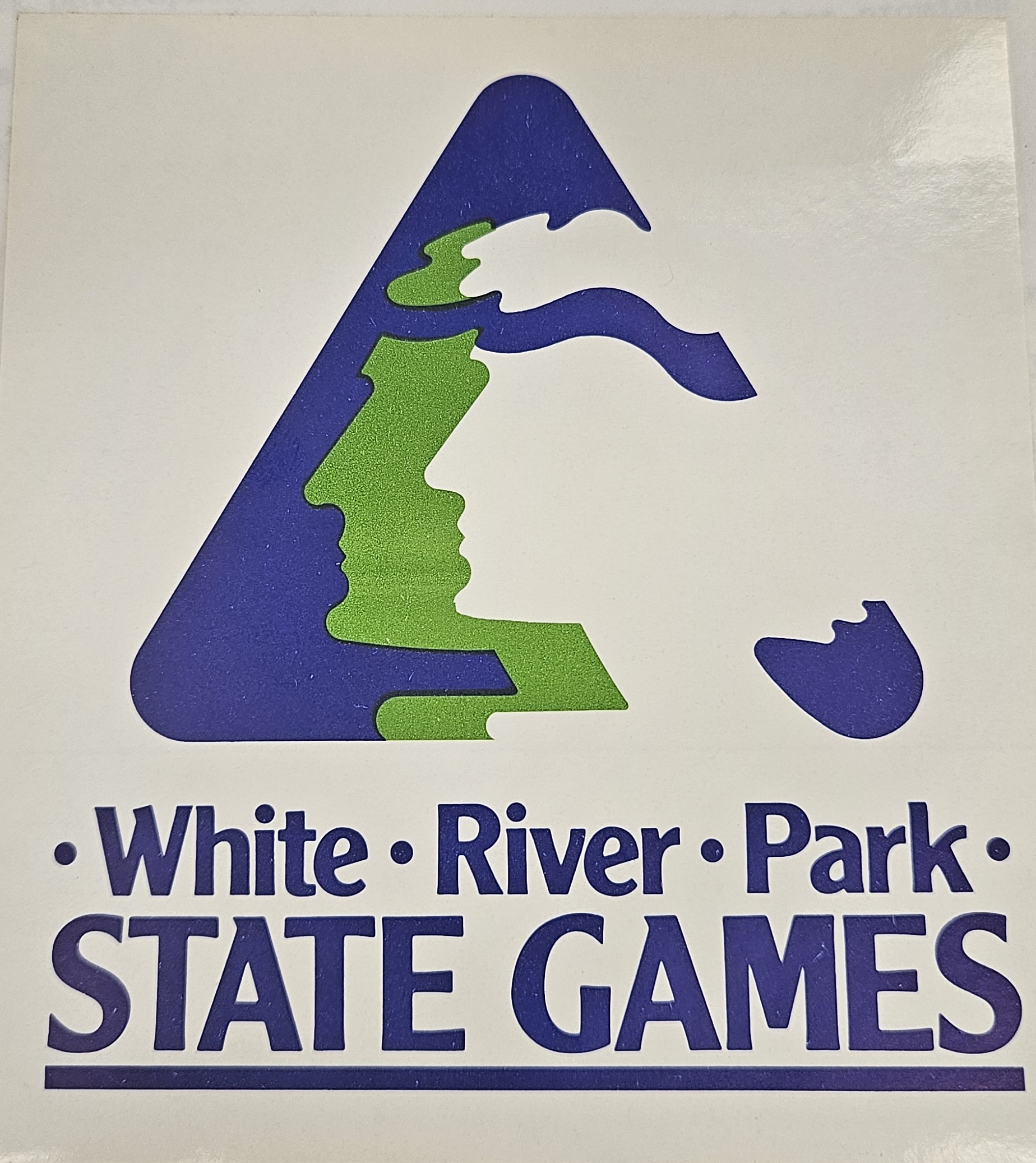White River Park State Games

The Indiana State Archives holds a collection on the White River Park State Games. The collection includes advertising materials, budget paperwork, press releases, and planning documents. This collection represents an interesting decade of amateur sports history in Indiana.
The White River State Park Games took place between 1983 and 1994. The Indiana General Assembly established the White River State Park Development Commission in 1979.. Together with the Governor’s Council on Physical Fitness and Sports Medicine and the Indiana Sports Corporation, the White River State Park Development Commission sponsored the Games. The Games were modeled after the Sunshine State Games of Florida and the Empire State Games of New York. In part, the Games were a strategy to make use of the amateur sports facilities that were built in Indiana for the National Sports Festival in 1982. Indiana was only the fourth state to hold such an event.
In the initial proposal for the Games, goals included boosting the Olympic effort and further developing a statewide grassroots amateur athletics program in addition to providing a space for all Hoosier athletes, regardless of age and athletic abilities, to compete with those in their own age and skill level group. Planners sought to involve as many Hoosier athletes as possible and the first Games involved an estimated 15,000-20,000 athletes with 4,000 plus finalists in July at the finals in Indianapolis.
Planners decided to tie the White River State Park to the games to further publicize both the Games and the Park. Political leaders envisioned the White River State Park as an economic development project to “broaden its economic base and bring private investment dollars back into our state.” In a January 6, 1983, press conference announcing the Games, Governor Robert D. Orr expressed a belief that sporting events and amateur athletics created a “pull-together spirit” that “unifies communities and plants competitive spirit among participants.” Governor Orr was not the only one with high aspirations for the State Games. Other members of the sponsoring organizations aspired to expand from an original ten sports to up to thirty. They also aspired to eventually combine recreational games competition, and arts competition to the athletic competition.
In 1983, the inaugural Games consisted of ten sports: track and field (also known as “athletics”), basketball, boxing, cycling, diving, gymnastics, softball, swimming, tennis, and wrestling. $250,000 comprised the budget in 1983 and the sponsoring organizations were able to solicit Hook’s Drug Stores as the first corporate sponsor.
Forty-five regional sites conducted competitions throughout May and June. The finals were held July 2-4 in Indianapolis. Athletics, gymnastics, basketball, and swimming required regional qualifiers while tennis and softball were determined by past performance and the remaining sports competed only at the finals. The 1983 sports selections met two criteria: 1.) the numbers and age range of potential participants were broad and 2.) there must be available first-class facilities at which to hold the final competitions. There were originally nine proposed sports with golf, wrestling, archery, soccer, and volleyball proposed to be added in 1984 or 1985. Planners even designed an original mascot, “Coach Macaw” to represent the Games.

The 1983 participation handbook, or “WRPSG Bible” consisted of 48 pages. The handbook contained information on registration, eligibility, schedules of events, competition rules, and the required entry forms. Hook’s Drug Stores freely distributed the handbooks throughout Indiana. There was a $2 registration fee for each athlete. Registration deadlines varied by sport, but only gymnastics required an extension to acquire more participants. With ten original sports there were over 700 events in 1983. Athletes competed for Olympic style gold, silver, and bronze medal awards.
Operating expenses expanded over time. The 1983, the $250,000 budget covered promotional items such as posters for every grade, junior high, and high school in Indiana, the printing of 300,000 4x9 mini fact sheets, the custom painting of two metro buses, a Public Service campaign through the Pearson Group Advertising, and advertising through Hook’s. There were also commemorative items ordered for each member of the sponsoring organizations. Between 1983 and 1993, there was a net deficit of $49,690. During 1993, the Indiana House passed a Resolution to congratulate the WRSP Commission on the success of the Games. In 1994, the final year of the games, the net deficit exceeded $121,000.
The 1994 handbook lists twenty sports: basketball/3-on-3, bowling, cycling, diving, figure skating, 5-mile run, golf, gymnastics, judo, racquetball, soccer, softball, swimming, table tennis, tennis, 3-mile walk, track & field, volleyball, water polo, and wrestling. Indiana had the second most popular state games by 1988, second only to New York. The Games ultimately ceased due to financial difficulties.
For more information on IARA’s collection of White River State Park Games, or to schedule a visit to view the collection yourself, email us at arc@iara.in.gov or call 317-591-5222.

